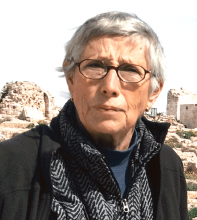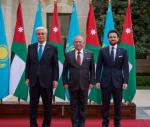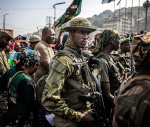You are here
Gaza must not be sidelined or forgotten
Apr 18,2024 - Last updated at Apr 18,2024
Concern over how Israel will respond to Iran’s foiled missile and drone attack on Israel last weekend has deflected international attention from Israel’s deadly and destructive war on Gaza. The US, its Western allies, China, Russia and the Arabs have now concentrated on trying to convince Israeli prime minister Benjamin Netanyahu not to retaliate against Iran rather than pressing him to end the terrible Gaza war.
Without the war, Israel might not have bombed the Iranian consulate in Damascus, killing seven Iranian Revolutionary Guards officers and another six people, and Iran might not have mounted its retaliatory operation.
Gaza must be the chief focus. Doctors and relief workers who have this month been in Gaza have testified to the continuing degradation of human life in the Strip. On his return to the US after treating patients there, Syrian Arab Medical Association volunteer Dr Samir Attar told Reliefweb, “Every day we saw death from malnutrition, dehydration, and traumatic blast injuries.” The World Health Organisation sent Attar and another three doctors to northern Gaza where malnutrition is rife. Since October 7th, at least 27 children have died from starvation, 16 per cent of children are suffering from acute malnutrition, and 3 per cent from severe acute malnutrition.
In an interview with the Canadian Broadcasting Corporation, US neurosurgeon Dr David Hasan said he carried half a million dollars in donated medical aid to the European hospital. After transporting the aid to Cairo, he said it had to pass through 11check-points before entering Gaza via the Rafah crossing with Egypt.
En route he passed thousands of aid-laden lorries waiting to reach Gaza. Hasan, who had been in Gaza in December, found 57 per cent of Rafah destroyed. The situation in the hospital was much worse than during December. There was poor sanitation, no water, and doctors were overwhelmed and exhausted. As there is no government, trucks which arrive in Gaza do not know where to go or how to distribute aid. He stated, “I saw five-year-old kids wanting to die. They should have been playing, watching television.”
In an interview with the BBC, British doctor Victoria Rose made a video diary of the European hospital where she volunteered. She showed how displaced families had hung sheets in the corridors to secure some privacy. But “its not clean, not private”, and there is raw sewage. She operated until midnight on children under 16 years of age. Wounds were not healing because of malnutrition.
While UNICEF’s Tess Ingram waited in an armoured car in an aid convoy near a checkpoint, the vehicle was hit by three bullets fired from the direction of the checkpoint. No one is safe in Gaza.
Under pressure to allow more food and medicine into Gaza, Israel announced that 322 aid trucks entered Gaza on April 7th, 419 on the 8th, and 458 on the 9th. On the 15th, US national security spokesman John Kirby claimed that “in the last few days” 2,000 trucks had been allowed in, 100 in the previous 24-hours. This was 400 trucks fewer than the daily average before the war.
However, if he relied on Israel’s figures, they are disputed. UNRWA, the agency caring for Palestinian refugees, reported 223 trucks on the 8th, 246 on the 9th, and 141 on the 10th. Israel requires aid lorries must be only half full when checked by its teams and counts those presenting for inspection as permitted entry while agencies receiving aid inside Gaza count fully loaded lorries.
Israel has withdrawn its offer to open its northern Erez-Beit Hannoun crossing to aid traffic. I never thought this would happen as Erez is a passenger terminal consisting of a narrow kilometre-long cage divided into monitored sections through which people entering and leaving Gaza via Israel must pass. There is a small gate in the fence for military vehicles, but it could not handle the volume aid traffic desperately needed in the north.
As a replacement for Erez, Israel announced on April 12 that the first aid convoy consisting of four laden trucks had crossed into Gaza on the night of the 11 through a new land crossing in the north. The aid was inspected at Karim Abu Salem the goods gate 60 kilometres distant in the far south before being driven to the new crossing. This is expected to handle 50 lorries daily — eventually. Recently, the Israeli army has allowed aid trucks to use a military road in central Gaza at a crossing known as “Gate 96”. Here, only 15 drivers have been authorised to transport food into Gaza although dozens of drivers are needed for scores of lorries. Drivers must receive clearance for returning to the crossing with empty trucks stretching out turn-around time.
Israel has not, reportedly, authorised Ashdod port to accept humanitarian aid cargoes. Ashdod is 40 kilometres from Gaza. It is the port nearest to the strip. Israel has not opened a promised centre to coordinate aid deliveries with humanitarian agencies.
UN humanitarian coordinator Jamie Goldrick said on April 12, that despite Israeli commitments to “flood Gaza” with aid, there is no difference in deliveries. He warned that “if we do not have the chance to expand the delivery of aid in all parts of Gaza, but in particular to the north, then we are going to face a catastrophe”.
Meanwhile, the situation on the ground is deteriorating. Israel has damaged and destroyed buildings along the border of Gaza with Israel to create a one-kilometre-wide buffer zone from which Palestinians will be extruded. This appropriation of Gaza’s land would deprive residents of one of the most densely populated areas on the globe of both farmland and living space.
Goldrick revealed that at least 800,000 of the 1.5 million Palestinians sheltering in Rafah in the south, may be forced to evacuate if Israel launches its Rafah offensive against Hamas. Reliefweb cited him as saying that evacuees “would face a high risk of unexploded ordnance en route to other areas, including Khan Younis and Deir al Balah, and aid workers would face the additional challenge of scaling up assistance when there are barely enough supplies to meet humanitarian needs under the current conditions”. On Sunday, Israeli troops fired upon hundreds of Gazan families packed their belongings and attempted to travel northwards to their homes, despite the likelihood they have been destroyed. Five persons were killed.
Gaza must not be sidelined or forgotten.














Add new comment